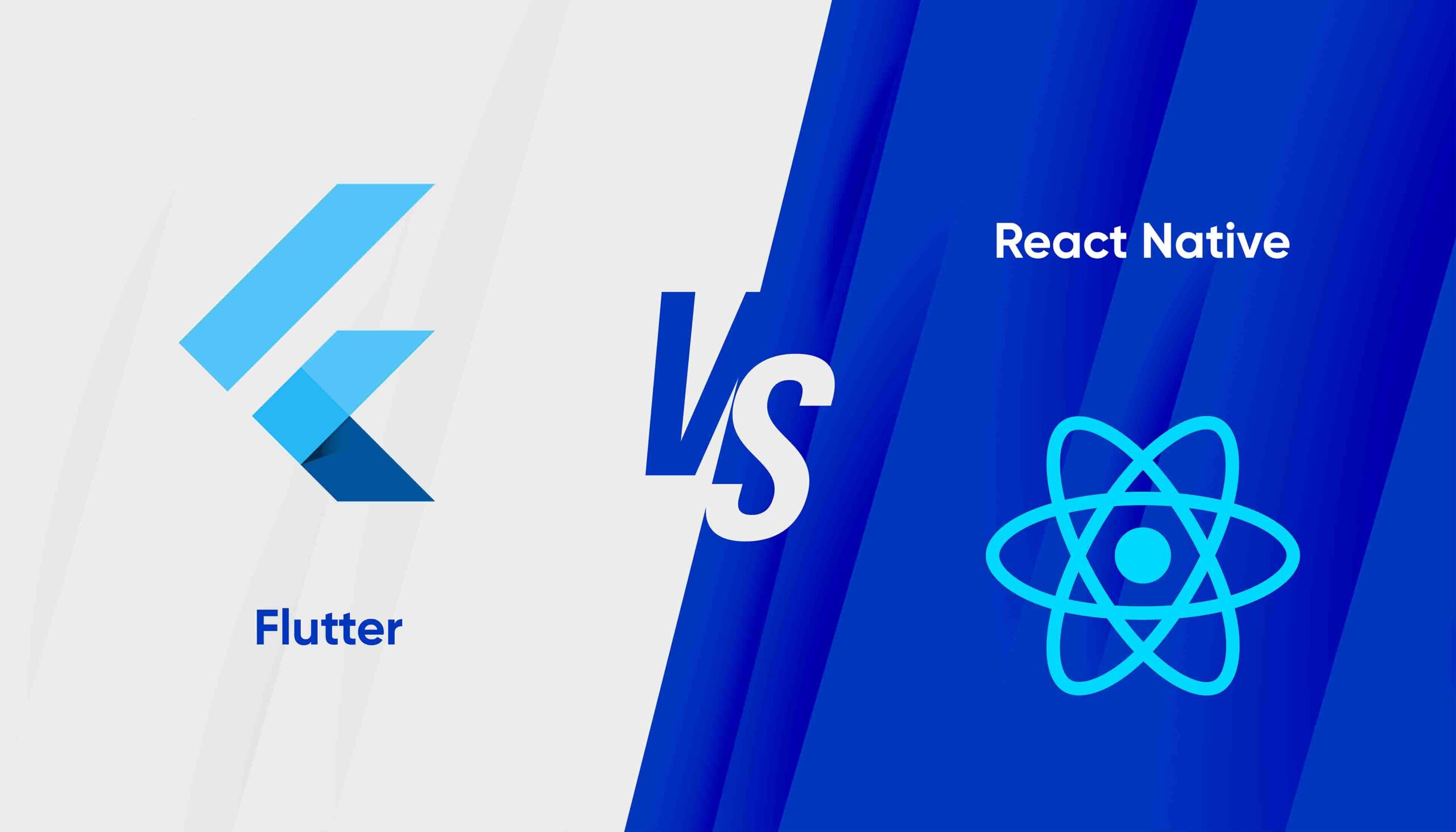
Flutter vs React Native in 2024: Detailed Explanation
Flutter vs React Native 2024 Guide
Looking to speed up your app development and trying to find out competitive services? Wishing to get an app with all the modern functionality and not sure which platform to start with? Planning to choose the right platform between Flutter vs React Native 2024, but unsure on the aspects that you will have to deal with? Worry not! We are here to help you find out the right platform by providing insights on both frameworks.
The battle between cross-development platforms is nothing new. The popularity of Flutter vs React Native is a prime example to it. Both these platforms are the leading choices of various mobile app development companies for having a bunch of features that come handy with app development responsibilities.
Introduction to the Flutter vs React Native Battle
Both Flutter and React Native come with their own sets of advantages and disadvantages. You might also be considering a native development approach for your app, which is perfectly valid. However, since you’re here, it’s likely that you’re evaluating different technologies for cross-platform app development. In this article, we’ll provide a detailed comparison of these two popular frameworks to help you make an informed decision.
The recent surge in cross-platform mobile app development services is a result of ongoing demand from customers. Over the years, this demand has only increased paving a way for companies to gain more insights on services and to earn added profits as well. During these years, many mobile app development solutions have emerged and have their own demand as well. The picture below illustrates how the popularity of cross-platform mobile app development has increased.
Why to Choose Right Framework for Mobile App Development
Why Picking the Right Framework Matters When Choosing Services of a Mobile App Development Company?
Choosing the right framework impacts many aspects of a project. These aspects include performance, scalability, maintenance, cost, and development speed. The ideal framework will optimize your development process, provide a seamless user experience. This will also help to minimize long-term expenses. Making the right choice ensures your app runs efficiently and is easy to maintain, ultimately saving you time and money.
Now that we have discussed the importance and popularity of Flutter and React Native, let’s have a look at both the platforms separately.
What is Flutter?
Flutter is an open-source UI toolkit designed for creating cross-platform applications that run seamlessly on mobile, Windows, Linux, and macOS devices. Launched by Google in 2017, Flutter has rapidly gained popularity among front-end and full-stack developers. This popularity is possible due to Flutter’s ability to build apps for multiple platforms from a single codebase.
One of the key advantages of Flutter is its user-friendly interface and extensive library of pre-built widgets. These offerings significantly streamline the development process.
In addition to its open-source nature, Flutter provides a robust testing environment, comprehensive integration APIs, and various tools that make cross-platform app development more efficient. Applications built with Flutter are developed using the Dart programming language, known for its simplicity and ease of use.
Popular Apps Built on Flutter
- Alibaba
- Square
- Groupon
- CapitalOne
What is React Native?
React Native is a JavaScript-based mobile development framework that supports cross-platform development. The platform enables developers to create mobile, web, and desktop applications using a single codebase. Introduced by Meta (formerly Facebook) in 2015, React Native is an open-source toolkit. The platform helps to convert JavaScript code into native components, facilitating the creation of iOS and Android apps.
Additionally, React Native offers compatibility with external libraries. This allows and enhances React Native’s capability to support web and desktop application development. This framework provides developers with the flexibility and efficiency needed to build versatile applications across various platforms.
Popular Apps Built on React Native
- Skype
- Tesla
- Uber Eats
Points of Similarities between React Native and Flutter
Let’s have a look at the similarities that both the platforms have. This will provide an insight on why they are preferred so much by companies offering software development services.
React Native and Flutter are both popular open-source frameworks for cross-platform development. The cross-platform ability of both platforms allows developers to create applications from a single codebase. These platforms share numerous features and similarities, making them go-to choose for professionals in the mobile app development industry. Here is a brief on points to detail similarities in both platforms.
-
Community Support
React Native and Flutter have established themselves as robust development frameworks over the years. Both have cultivated strong developer communities and a plethora of resources. Aspiring developers can access numerous online forums, tutorials, blogs, and other dedicated materials for learning and troubleshooting. Being open-source, both frameworks boast extensive libraries, plugins, and pre-built components, which significantly enhance their functionality and ease of use.
-
Libraries and Widgets
Both platforms offer extensive libraries of pre-built native UI components. This helps developers to rapidly prototype and build applications. Flutter primarily relies on customizable widgets built into the platform. These customizable widgets are optimized for both iOS and Android. This allows developers to create apps with a native-like visual appeal and performance.
React Native, on the other hand, utilizes third-party libraries and community-maintained UI components. Although these components function slightly differently from Flutter’s built-in widgets, they still provide comparable levels of functionality and visual appeal. This approach allows React Native developers to achieve a high-quality user experience across platforms.
-
Performance
Flutter enables developers to build robust applications from a single codebase. This codebase can easily be utilized for both iOS and Android. Flutter utilizes Dart, a simple to work with language ideal for creating high-performance native apps. Flutter incorporates native hardware accelerations to enhance app performance.
Talking about React Native, it relies on native components and APIs to craft apps with optimized interfaces. React Native requires a bridge between JavaScript and the native code to interact with native components, unlike Flutter. This bridging process can sometimes introduce latency or performance bottlenecks, making React Native slightly less performant compared to Flutter.
Points of Differences between React Native and Flutter
Just like Flutter and React Native share some similarities, there are many differences between both platforms. A brief on these differences will help to get an in-depth insight about the performance and other aspects of both platforms. Let’s have a look at these differences.
-
User Interface Components
In Flutter, developers create apps utilizing a rich collection of customizable widgets. These widgets enable developers to use a comprehensive set of prebuilt UI components. This approach, which relies on Flutter’s own widgets rather than native platform components, provides significant flexibility in UI design and ensures consistency across different platforms.
React Native, on the other hand is built on native components. These components are specific to each platform. Developers use third-party libraries and toolkits to design appealing UIs for React Native apps. Although this method offers a wide array of options, the reliance on native components can lead to variations and inconsistencies in the user interface across different platforms.
-
Difference on Performance
Built with JavaScript, React Native requires a bridge to connect to native components. React Native is generally efficient; however, this bridging can slow down both development and runtime performance. In contrast, Flutter renders all components directly on its own canvas, eliminating the need for an interconnecting bridge between the code and the device’s native components.
Flutter is also known for its swift and efficient Dart runtime. This efficiency ensures that apps load and run quickly and there are no glitches in performance. It utilizes an “Ahead-of-Time” (AOT) compilation mechanism, which helps to compile apps into native code. This process reduces the runtime and processing demands. As a result, this leads to faster app loading and improved performance.
-
Platform Support
Flutter is primarily used as a development platform for creating applications for iOS and Android, offering a native-like performance and user experience on these mobile platforms. While Flutter does support web and desktop application development, its capabilities in these areas are still evolving and may be somewhat limited.
On the other hand, React Native provides broad platform support from a single codebase. This means you can develop applications for iOS, Android, Windows, and macOS using React Native. This ensures that React Native is the versatile choice for cross-platform development.
Now that we have a comparison of both platforms, it is now time to get into deeper insights to know when to use React Native and Flutter.
When to Use Flutter?
Despite being relatively new, Flutter has quickly become a top choice for many developers. It has become possible due to accessibility, cost-effectiveness, and user-friendly attributes of Flutter. The framework offers a unified development experience with rapid iteration capabilities. This makes Flutter ideal for fast prototyping and MVP development.
Flutter includes several tools designed to accelerate development. These tools include Flutter’s Hot Reload feature, which allows developers to view changes in real-time and simplifies debugging. This feature can also significantly reduce workload for QA while saving up the time by up to 50%. For those needing to build apps quickly, Flutter’s gentle learning curve and efficiency make it a strong alternative when comparing with traditional native platforms.
For businesses aiming to create visually consistent applications across both iOS and Android from a single codebase, Flutter should be the preference to go with. The framework has a rich set of native UI widgets that helps it to maintain a consistent look and feel across different operating systems.
When to Use React Native?
React Native has maintained its popularity over the years as one of the leading frameworks used by every mobile application development company. It boasts a large, active developer community and is employed by major global companies. Ideal for customer-facing applications that don’t heavily rely on OS-specific integrations or features, React Native excels in creating versatile and efficient mobile experiences.
The framework’s bridge structure is well-suited for apps for designs that are simple. Additionally, React Native proves to be a powerful tool for web app development. This is because the framework provides developers with a comprehensive set of tools and modules for building stable applications. One of the biggest advantages with React Native is the apps developed with the help of this framework can be seamlessly transitioned into mobile apps. This enhances the framework’s versatility and usability.
Flutter Vs React Native: What Does the Future Holds?
Flutter currently leads the market in cross-platform mobile development frameworks. It currently has a holding of 42% market share, which if compared with React Native comes to 38%. This marks a huge difference in the popularity of both platforms.
As per Google Trends, the indication for having a higher popularity is with Flutter for the reasons mention above. Not only that, Flutter’s popularity is continually rising. All these positives have contributed towards providing Flutter a top choice for developers. The platform is ideal to build high-performance mobile apps quickly.
React Native has also some significant benefits and is used by major companies including Meta, Twitter, Flipkart and more. Among a bunch of benefits that React Native offers, it still needs to balance the challenge of maintaining high-quality web apps with React Native API compatibility.
The Bottom Line
Both frameworks have strong prospects for future projects. React Native is ideal if you value a large, active developer community and extensive support. Select Flutter if you’re looking for a high-performance, easy-to-learn toolkit that enables rapid development.
Although the article has given all the major similarities and differences between Flutter and React Native, the choice of utilizing the platforms depends largely on the requirement of a particular project that a custom software development company is working on. Therefore, having an idea on what your project actually requires will help to choose the right framework for your development needs.
